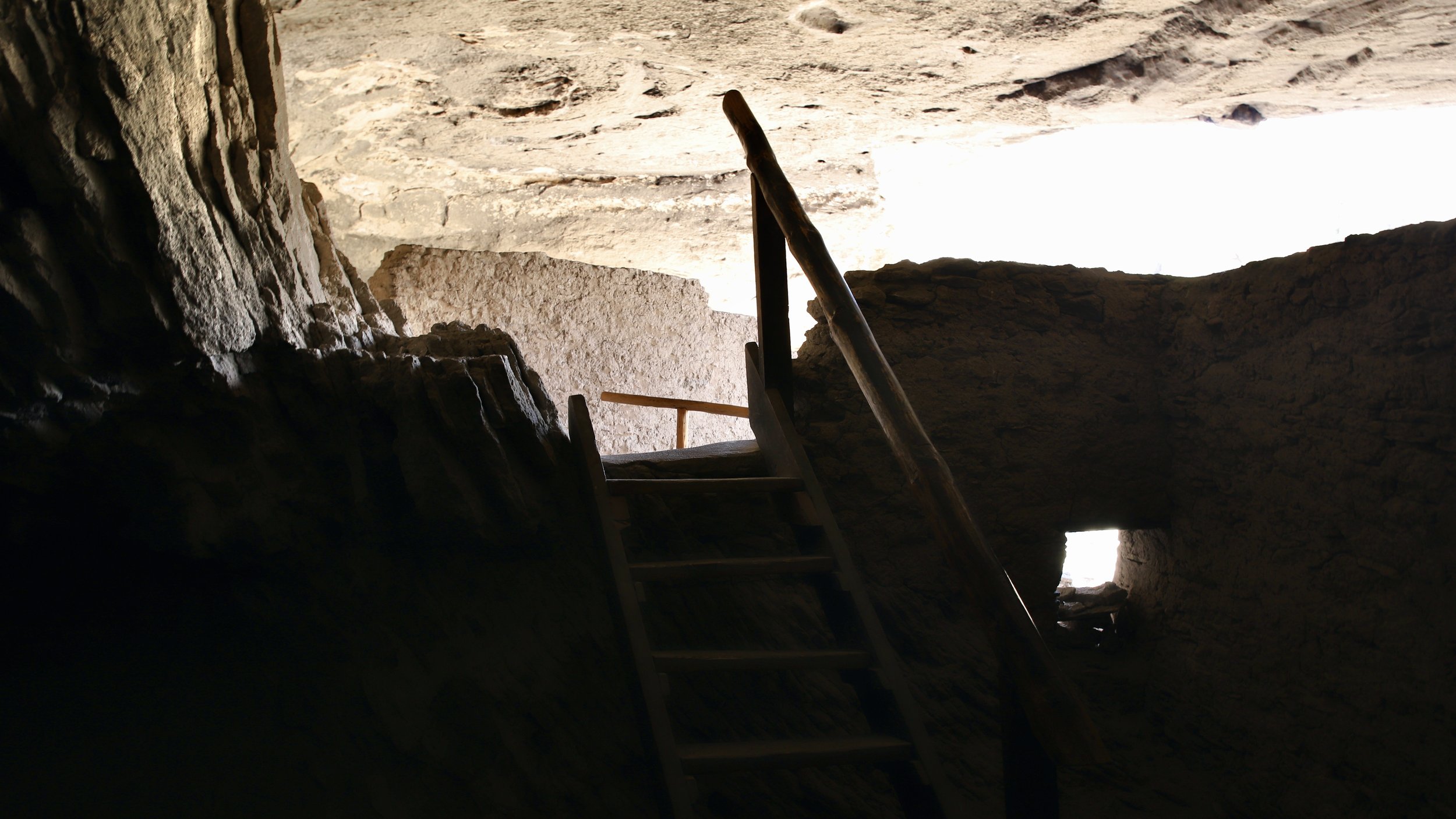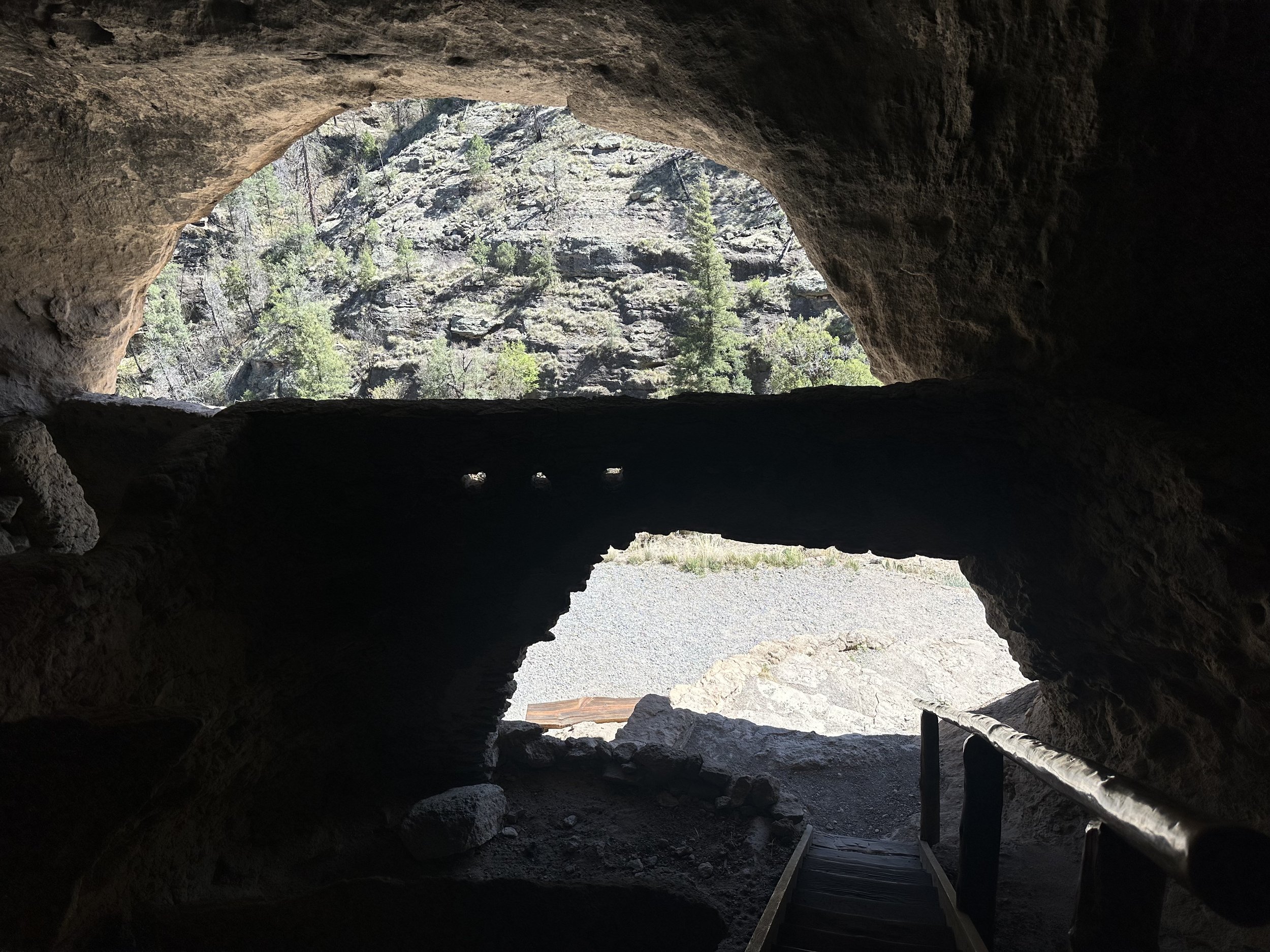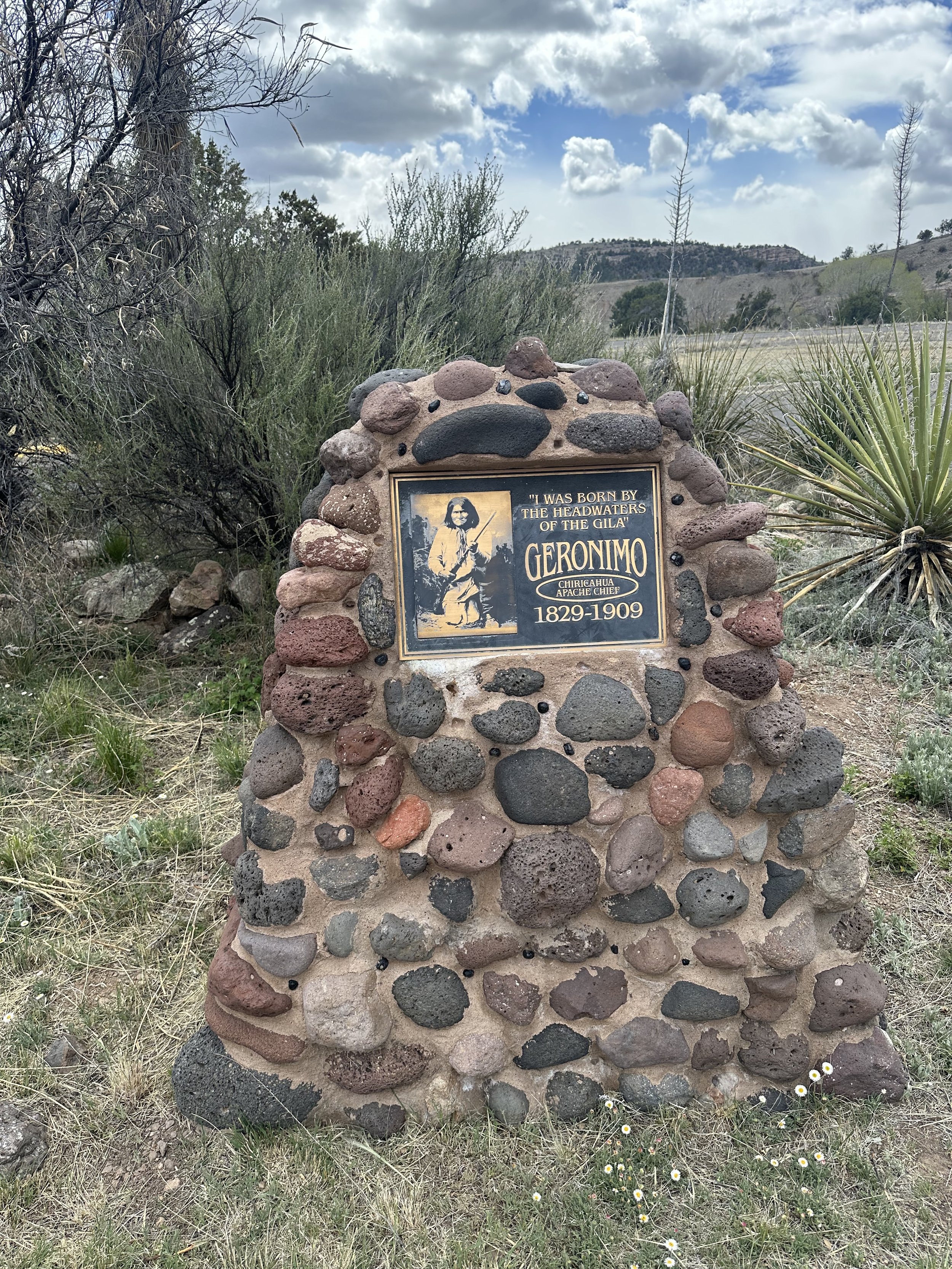
Gila Cliff Dwellings
1 Mile Roundtrip Loop
Easy & Exciting Trail To Amazing Cave Ruins
The Gila Cliff Dwellings is a remote National Monument in the Gila National Forest area of south central western New Mexico. Its remoteness and beauty make it one of my favorite little spots in the Land of Enchantment. But it’s also quite the mystery. The ruins and Monument lie 45 miles north of Silver City on highway 15 and the drive through the forest and the mountains on the Mountain Spirits Trail is one of my favorites with its many twists and turns through a green landscape.
Scroll down for my take on the enigmatic ruins.








Be sure to also check out the small cave dwelling house at the Lower Scorpion Campground! Just park at the parking lot and walk towards the pit toilet. Take the path to the left for the small ruin. Take the path to the right to see some pictographs!




The Gila Cliff Dwellings were discovered in 1878 by some prospectors in the middle of the Gila Wilderness of the Mogollon Mountains; a place not far from where Geronimo the Apache warrior medicine man was born. Only four years later, in 1884, Adolph Bandelier came and inspected the intriguing site. Unfortunately in the six years since its discovery, the site had been heavily looted and vandalized. Including but not limited to burning the roofs with the original timber, pulling down walls, digging numerous pits in search of relics and pots, and more. Regardless, some information was still able to be gleaned about the interesting site.
The first occupation of the massive cave was around AD500 when it was mostly used as a rock shelter to hide from the elements. It may have had some significant cultural landscape value but that’s hard to determine as of now. What is known is that it was used throughout the years as a shelter where fires were built. It is believed there’s just too much built up soot on the roof of the cave to be from the 11 years the Cliff Dwellings were occupied.
Their occupation began in 1276, when a different people, a people other than the surrounding Mimbres cultural people, possibly northerners, began to occupy the cave. They built extensively for 11 years until 1287 when they up and left the cave and the region. They left in the middle of constructing new rooms and even floors. After 1287, there was no remodeling which suggests it was not occupied again. The people came, they built, and they left.




The site was planned seemingly by outsiders who selected the location, built it up quickly for about 8 to 10 families consisting of 40 to 60 people. They all came in at once, built their dwellings, began building some additions, and then vanished seemingly overnight. They left stores of corn. They left unfinished rooms.
The Mogollon people, of which the Mimbres are a part of, are tricky. Archaeologists certainly have distinct definitions of them but I cannot help but link their later phases with the northern Anasazi. The Anasazi were a people systematically leaving their northern Four Corners homes and heading south to Paquime (or east to the Rio Grande but those are known as Ancestral Puebloans). Wether the Anasazi were following that elusive Chaco Meridian or not is only able to be speculated over. I tend to believe the Anasazi were heading south and gathering as many people as they could on their way. Wether it was the Mimbres, the Mogollon, the Hohokam, or others, they did not mind who joined and they took anyone willing (and unwilling) to go south with them. As long as… they followed some cultural rules. Which rules included T-shaped doors and the proliferation of corn.
There was so much corn left behind at the Gila Cliff Dwellings that multiple archaeologists, travelers, soldiers, and prospectors have commented on its appearance. You can still see the massive amount of cobs today!
When I last explored the site I was fascinated by something I hadn’t noticed the first time. Probably because I wasn’t looking for it. But the presence in Cave 4 of the square tower transported me far to the north, around the Four Corners. Hovenweep and other sites came to mind. The ranger in the shelter also shared my curiosity about the tower and how out of place it seemed. One researcher suggested it was a smoke house for making jerked meat but I am not sure I buy that explanation.
Another anomaly at the site was the abundance of marine shell ornaments. There was an exceptionally large and diverse amount of marine shells that were used as pendants, ornaments, bells, bracelets, and more. Of note is the fact that Paquime was a major manufacturer and distributor of these same type of shell ornaments. These shells apparently can come from the three sources one would think: The Gulf of Mexico, the Gulf of California, and the Pacific Ocean. But again, the key is Paquime. The shells arrived from the south. At a place that these people were most likely heading towards. At the same time they were convincing their Mimbres neighbors to follow. Convincing or enslaving.


Not to beat the Paquime drum too loudly here but also of note at the Gila Cliff Dwellings is the presence of not only Macaw feathers, but of a macaw skull and beak. Who bred and dealt in Macaw birds? Well, besides the Maya and later Aztecs? The people at Paquime. But also the people at Chaco Canyon. Two peoples I believe are inexorably and undeniably linked. Heck, even the Puebloans had Macaws. Just head to Petroglyph National Monument near Albuquerque and check out the amazing petroglyph yourself.
To confuse the interpretation of the Gila Cliff Dwellings though, is the large possible two story Great House pueblo with 120 rooms and Great Kivas that make up the TJ Ruins just north of the Cliff Dwellings. At this time I am unable to wrap my head around that particular story but they were most likely built by Mimbres cultural people who came up the Mimbres valley and built a large town instead of the many towns they had previously occupied. To even further confuse it’s story, The TJ Site was possibly abandoned right before the Cliff Dwellings were built and the Anasazi Civil War. But then it was reoccupied during the Cliff Dwellings suggesting commoners and farmers who fed the Cliff Dwellings.
The excavation of TJ in the future will no doubt provide countless answers to many of our questions about the Gila Cliff Dwellings. Not to mention, it appears the site was continuously occupied from AD500 to 1400. An almost unheard of period of continuous occupation. Although again, initial speculation points to an earlier abandon of possibly 1150 before being reoccupied again.
Until that’s excavated though, all we can do is speculate on these enigmatic ruins that make up the Gila Cliff Dwellings.










My belief? The people who built the Gila Cliff Dwellings were Chacoan Anasazi nobles or important matriarchal people from up north with tons of incredible wealth that were heading south to Paquime. Paquime was probably not even the final destination but they probably continued going south after Paquime was also abandoned. These Chacoan Anasazi had a way of life, a form of government, and many cultural beliefs that were from MesoAmerica, south of the Tortilla Curtain. Of course, the Mexican American border didn’t exist at the time but the people still had political boundaries. After the Anasazi Civil War was decided and the Mesa Verdeans headed to the Rio Grande, the Chacoan Anasazi headed south. This was just one stop they made to gather recruits, resources, more nobles, and possibly slaves, as they headed to be with their larger groups of people around Paquime (or Casas Grandes).
The abundance of corn, the abundance of marine shells, the abundance of Tularosa phase pottery from 50 miles north (the Chacoans didn’t make their own pottery but had others do it for them and they traded [like the Hopi]), the fact that macaw feathers and a macaw skull was found, the square tower, the T-shaped doors, and so much more all point to the fact that these people were Chacoan Nobles and they most likely had come down from Aztec after things got too dicey up there against the Mesa Verdean Ancestral Puebloans.
The Hopi and the Puebloans formed a more egalitarian (although don’t let Pueblo Mystique fool you) lifestyle after the Civil War which the Chacoans couldn’t stomach. So they headed south into what we call Mexico. They took captives as they went. They grew corn as they travelled the old trade routes. They built T-shaped doors and stone masonry structures as they fled. They often left seemingly in the middle of the night from the places they built in the late 13th century as they headed south. The American Southwest was being remade and the Great Migrations and abandonments were an integral, if not the most crucial part of that remaking. The Anasazi would head south far beyond Paquime and all the while people would be flung off the spiral. People like the Hopi, the O’odham, the Raramuri (Tarahumara), and plenty of others.
Be sure to stop by the Visitor Center and check out there displays on the Mimbres, Mogollon, the wildlife, and the Apache. Including a memorial to Geronimo.






